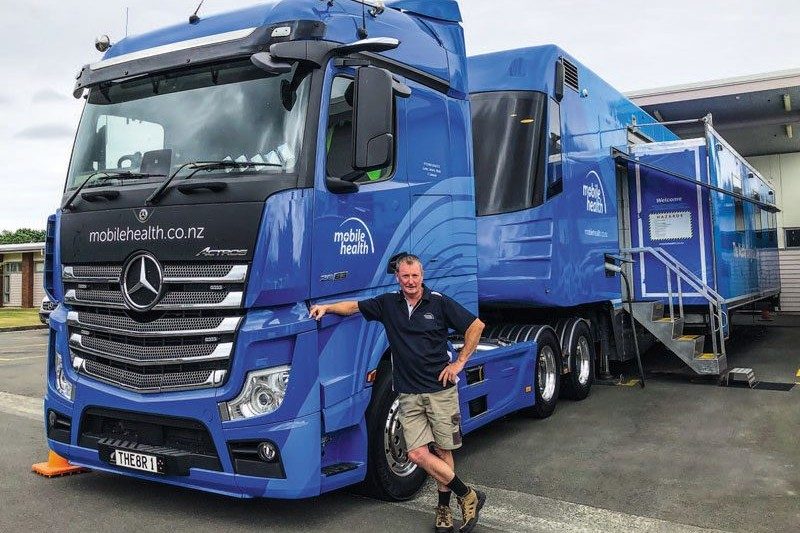A NEW NZTA

The 2020 New Zealand Trucking Association Industry Summit took place on Saturday 21 November at Riccarton Racecourse, Christchurch.
Brett Aldridge, senior manager, safer commercial transport, NZTA, outlined the agency’s new path as it follows its Tu ake, tu maia regulatory strategy until 2025. The plan sets out a path for the agency to return to its core functions by getting the basics right and getting smart about its regulation. “The regulator’s getting its act together and improving its statutory function,” he said.
Aldridge said that the commercial transport industry would see a different regulator.
Rebalancing – “We have many tools, and it’s about us using the right ones at the right time. We’ll use whatever tool we need to get the desired result.”
Safety and compliance outcomes – “The outcome is not about successful prosecution or reputational loss or fine; those are tools that help the outcomes. Where we find an issue, we won’t drop it till it’s resolved, be that compliance is achieved or someone’s removed from the system.”
Engage with industry – “We need to understand your drivers and frustrations so we can understand how to best work with you so industry can flourish but with some boundaries. We want to meet, work through issues and understand things. You’ll see a regulator that communicates clearly in a language that can be understood.”
Relationships and partnerships – “All of us want a safe transport system, and none of us wants deaths and injuries. We’re really just paving how to get there and how we can achieve that.”
Consistency – “Regional differences will be minimised. In time, we will act and feel the same up and down the country.”
No surprises – “We’ll hold you to account, and there will be consequences for those that don’t operate as they should; we won’t apologise for that. There have been surprises, and that’s not okay. You’ll be made aware of what you need to do and any action long before it comes, and you’ll be given every opportunity to do what’s required.”
Level playing field – “Without that, it can become a race to the bottom. Compliance must be an asset, not a disadvantage.”
With the basics in place, Aldridge discussed how the regulator would get smart about how it regulated. “We will increasingly take a system view to compliance; we’ll be delving less into logbooks and GPS and more into operators having the systems to manage those risks. Our interest is that risks are being managed and transport- service operators are taking responsibility to ensure the performance of their drivers and operations – that’s what we’ll hold them accountable for.”
Aldridge said the main risks the regulator would be interested in were fatigue, speed, fleet maintenance, impairment, distraction, and dangerous goods. “The ideal is for transport service operators to manage their drivers’ performance, and the expectation is good operators will have systems in place to do that.”
Aldridge said the regulator would also expect more from professional drivers when driving personal vehicles. “It’s not okay or appropriate to be safe at work and do what you like after work…”
He said the agency would increase the effectiveness and efficiency of its permitting function and wanted to provide the right incentives to drive-safe operations. “We want to reward safe operators who invest in safety technology. Permitting allows us to hold permitted operators to account for their performance; a permit should not be considered a right. There’s potential for long-term permits for better performance and investment in safer technology. We want to hear industry views on the types of incentives that will encourage safer performance.”
Finally, Aldridge said the regulator would work to leverage the expertise, tools and legislation at its disposal. “We’ll look to use all our regulatory tools to address regulatory issues. We’re looking to be far better connected with our regulatory partners, specifically the police and the commercial vehicle safety team, wider policing units and WorkSafe.”
During 2021, a big driver for the regulator is to consider how it can perform its regulatory role differently and influence safety performance in the wider commercial- transport sector and beyond the individual operators that come onto its radar.
“We’re dealing with huge numbers – too high to expect a standard compliance monitoring approach is going to influence behaviour. My unit probably touches 1.5% of operators per year. There’s no way that’s creating a level playing field. In a low-margin industry that provides the wrong incentives and allows poor operators to flourish,” said Aldridge.
“I’ve consistently heard from industry that we need to level the playing field, need to be a strong regulator, engage, and up our performance. I intend for us to meet that challenge and change the status quo.”
Read more
Simeon Brown
0 Comments9 Minutes
Michael Wood
0 Comments12 Minutes
A LEVEL HEAD
0 Comments4 Minutes
Jimmy Wilson
0 Comments2 Minutes





